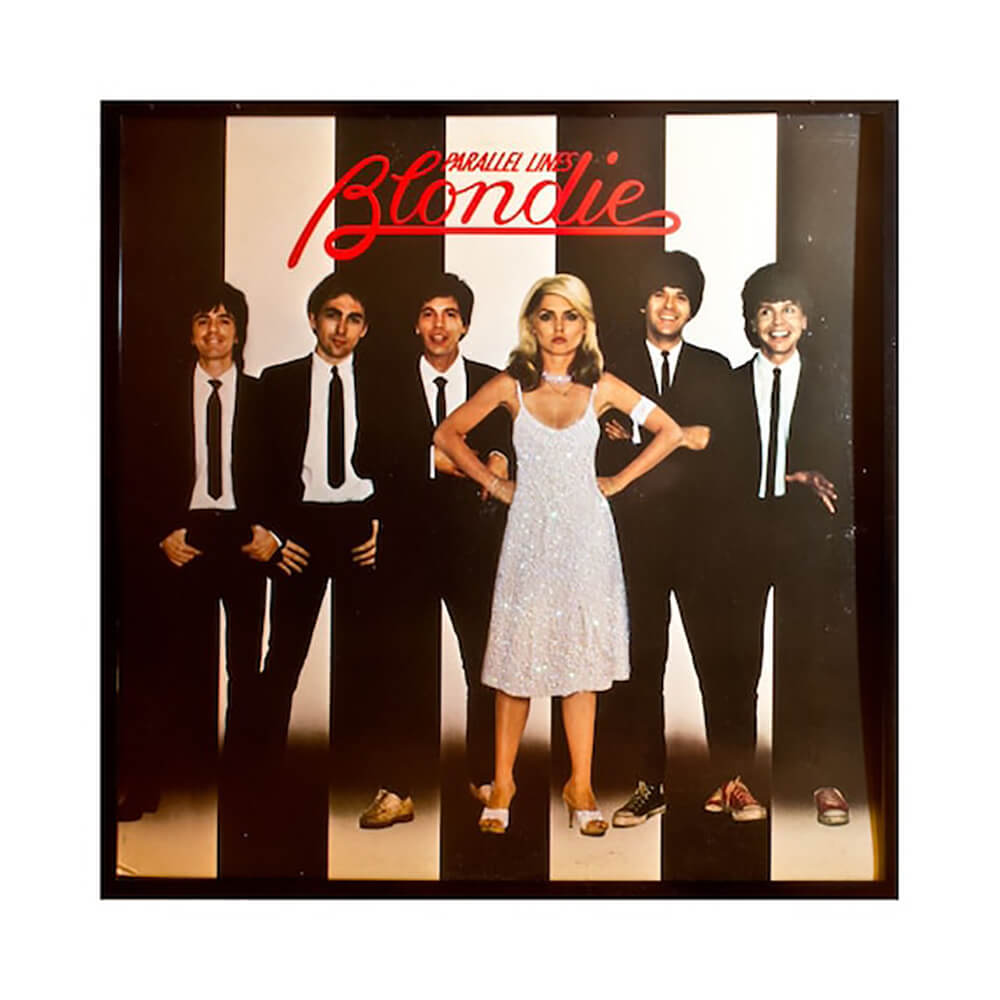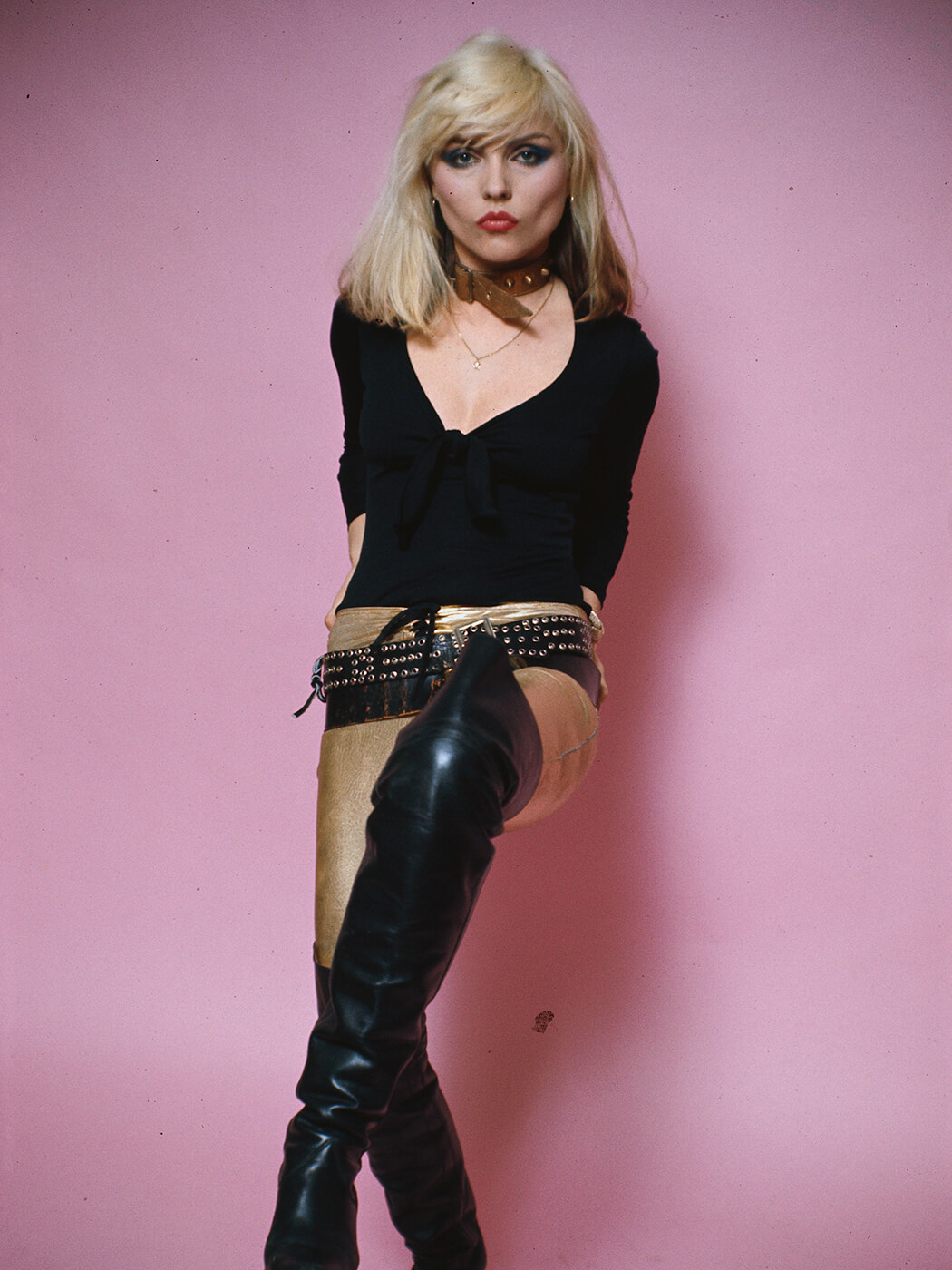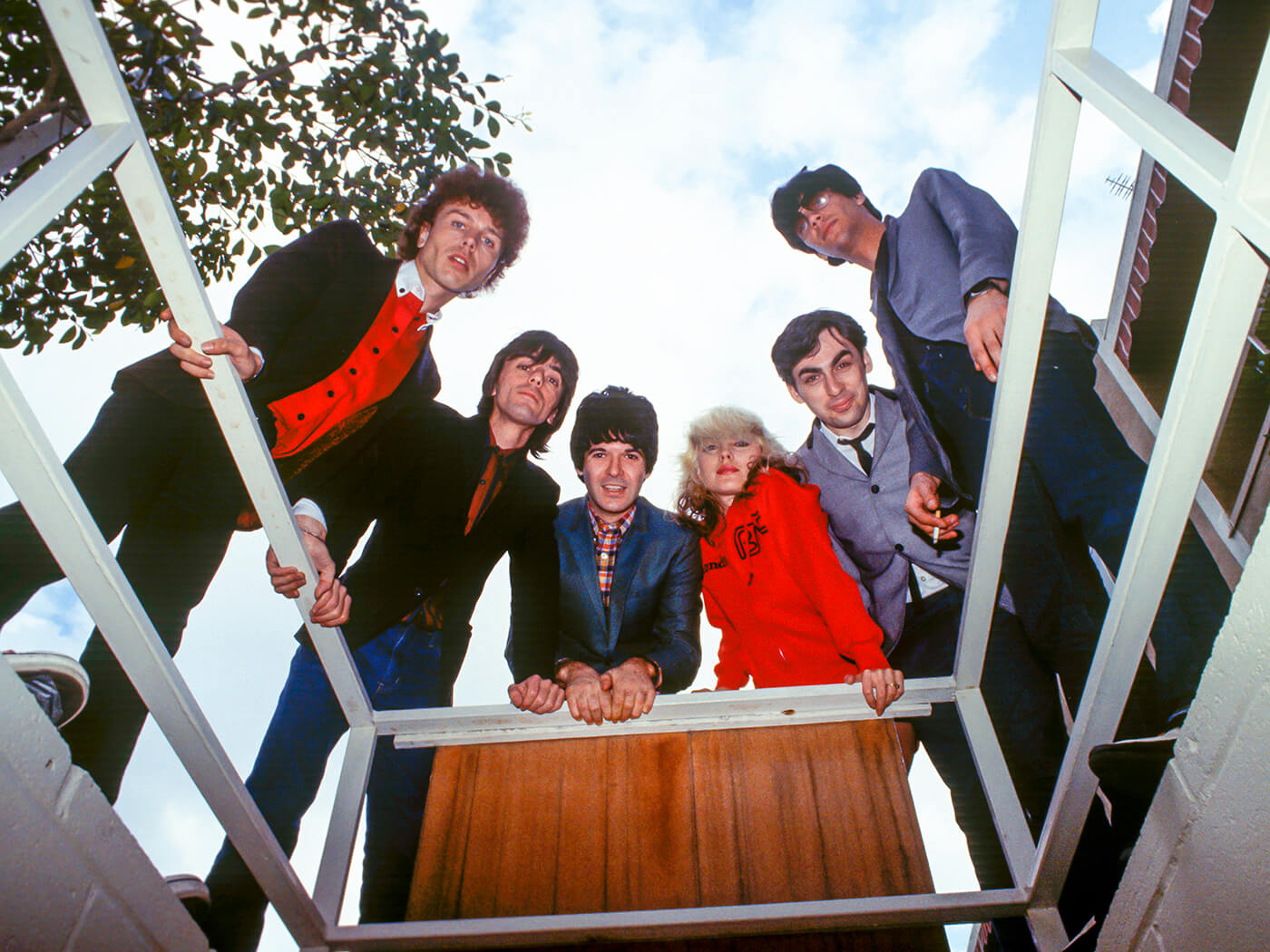The Genius Of… Parallel Lines by Blondie
With their iconic third album, Blondie mixed up disco, the retro sound of 50s girl groups and their angular new-wave punk ethos to build songs which would elevate the New York outfit to a position of globally acknowledged importance, without sacrificing their characteristic edge.

Image: Pete Still / Redferns
With their razor sharp guitars, allusions to a wealth of diverse influences and a naturally iconic frontwoman centerstage, New York’s Blondie already stood several leagues apart from their peers by the late 1970s. While the UK’s record buying public were hopelessly enraptured pretty much from the get-go, it took a special kind of chemistry to craft the record that would shape their fortunes domestically.
Released in September 1978, the majestic Parallel Lines bore the fruits of the band’s calculated efforts to hijack the charts. It brimmed with brilliantly constructed ear-worms, and pleasingly confounded those seeking to pigeon-hole.
One way or another
Ever since their inception in 1974, Blondie had consciously cherry-picked from a forest of influences. The band first originated when 23-year old guitarist Chris Stein joined former waitress and Playboy bunny Debbie Harry’s female vocal troupe The Stilettos. Stein and Harry shared a love of similar flavours of punk and pop, and soon forged both a tight creative and romantic partnership. “I just love the way Chris thinks.” Harry told The Sun, “He is open to all kinds of music. I think it must be down to his punk spirit.”
Before long, the pair sought to create a new kind of musical vehicle. Appropriating a slur that the Monroe-like Harry had been frequently met with as she strolled around the decaying Bowery neighbourhood in Manhattan, the burgeoning band christened themselves as ‘Blondie’, and eventually settled on a five-piece line up. Joining Harry and Stein came Clem Burke on drums, Gary Valentine on bass and Jimmy Destri on keys. From the outset, Stein’s guitar approach prioritised attitude over technical flair, “Schooling and practice is not a bad thing, but at that time, there was a spontaneity missing on the radio.” He explained to Cryptic Rock.
With an alluring fusion of 50s and 60s girl-group, mod and the ramshackle punk sensibility of Stein’s guitar playing, the band quickly cultivated heady buzz on the cabalistic CBGB-oriented new wave scene. Blondie’s initial clutch of songs bore the same quirky DNA that would be central to their greatest work, from the irresistible lo-fi swagger of X-Offender, to the knowingly kitsch, Phil Spector-aping In The Flesh and their snarlingly cool take-down of high-minded critics, Rip Her To Shreds. Signing to the charmed Chrysalis Records, Blondie were clearly on the path to becoming something special indeed.
Despite their debut self-titled album sporting those aforementioned top-drawer cuts, this opening shot failed to make an impact in the US. But, across the pond in Britain, nods of approval from the likes of David Bowie and Iggy Pop (who would eventually seek the band out to support him on his The Idiot tour), as well as exposure on UK chart shows, enabled Blondie to build a solid core of Brit fans.
It was this odd disparity – commercial and critical favour in the UK but a lack of widespread interest on home soil – that informed the band’s next move. Their follow-up LP, Plastic Letters was released in February of 1978, and though the record further demonstrated Blondie’s inventiveness, and cemented their place as one of the UK’s favourite punk-pop outfits, it did little to wake-up America’s record-buying public. Wasting no time, the band decided to plunge headlong into the recording of another album in that same year. This time, it would be a record that nobody could ignore.

Will anything happen?
A further, final shake up of personnel took place, with additional guitarist and occasional bassist Frank Infante joining the crew to replace the erstwhile Gary Valentine. Initially enlisted as a session player, Infante would prove a vital creative element as they approached this new record. A full-time bass replacement came in the shape of Nigel Harrison, an English musician who had moved to New York at a young age, bringing with him a love of The Yardbirds and The Who.
To helm the new chart-focused record, the band turned to the well-respected producer Mike Chapman, who had had a string of hits under his belt with glam pop acts such as The Sweet and Suzi Quatro. After being invited to watch the band by Chrysalis Records, Chapman was struck by their potential “I went to New York and met with Debbie and Chris at the Gramercy Park Hotel where they were living.” Chapman recalled with Ultimate Classic Rock, “We sat on the floor together and listened to a few rough demos. I loved the new song ideas and told Terry [from Chrysalis] to book some rehearsal time and I would start the recording process.”
The new song ideas spanned a gamut of flavours, from the immaculate sparkle of Picture This, the melodic, studied sweetness of Sunday Girl and One Way or Another’s mechanical, sludgy grind. There was more than enough for Chapman to sink his teeth into.
Both producer and band agreed to focus on making the record differently to the rawer approach of their previous records, gradually building the tracks up bar-by-bar. “Mike took [our musicianship] to a whole other level of meticulousness, where we were doing stuff over and over again to do it really precise and perfect.” Stein remembered in the documentary, Blondie’s New York.

Mucho mistrust
Entering the Record Plant with Chapman, the principle guitarists Chris Stein and newcomer Frank Infante were largely shepherded by Chapman, who didn’t shy away from admitting that the garage rocking six-piece were initially difficult to corral. “They were, musically, the worst band I had ever worked with.” he told Sound on Sound.”The only great musician among them was Frankie Infante. He’s an amazing guitarist. The rest of them were all over the bloody place.” Despite these initial teething troubles, the relationship between producer and band softened as Mike got to know them more. “The fact was, Frankie made Chris look like a terrible guitar player. I loved Chris, and I worked very, very hard with him for years and years because I felt he deserved my time. He, to me, was a wonderful songwriter, and he was always so concerned about his playing ability.”
One of the key cuts, the pile driving One Way or Another, had started life as a very basic bass part written by Nigel. “It was just two chords going back and forth with a little riff in it” recalled Nigel in Blondie’s New York, “I was too shy to show it to anyone, it’s thanks to Jimmy (Destri) who said we should make a song out of it”. Worked up by Stein, Infante and Chapman (who usefully, was also a guitar player) the song quickly became one of the favoured songs in the sessions, its D-B chord-oriented foundational riff was laid down by Infante using his overdriven Les Paul Standard, while Stein added some additional harmonic lead flourishes on his Stratocaster, as well as the deranged mania of its middle-eight��’s riff barrage in F♯m. The song was perfected by Harry’s threatening, stalker-inspired lyric. It’s a lyric which altered the listeners’ perspective on that bouncy, two-chord riff – transforming its relentless simplicity into the sound of ruthless obsession.
While Infante kept his Les Paul Standard to hand on most tracks, Stein largely stuck to a Strat-centric rig during the making of Parallel Lines, despite a few additions of 12-string Rickenbacker 425 to add a retro-Byrds-like shimmer. As he told Vintage Guitar “I had a lot of Fender amps and a ’56 maple-neck Strat I used all the time that was really great. I mostly used Strats because I was such a Hendrix freak; I referenced that all the time. I used Fender amps and occasional Marshalls.”
While further punkier-edged songs came in the shape of Infante’s demonic-sounding I Know But I Don’t Know alongside the swaggering strut of Harry’s Just Go Away, Blondie’s songwriting diversified with the likes of the gothic, electronic ambience of Stein’s Fade Away and Radiate, which guest-featured the unmistakable squall of their friend, Robert Fripp. Another example of Blondie’s wide-ranging scope was the hypnotic, emotional charge of Pretty Baby. Built around a straightforward G–D-Am–C verse chord sequence, Pretty Baby further expanded Blondie’s musical range, with an almost northern soul-like bassline from Harrison serving as its median throb, while the skating final pained guitar riffs cavort with Harry’s heart-breaking vocal melody. Here was yet another bona-fide classic in the making. But it was by no means the last.

Heart of glass
The ultimate example of Blondie’s chart-sighted ambitions, and the album’s signature cut, was the stunning Heart of Glass. Originating as a rather plodding band-demo that had absolutely zero dancefloor appeal, Chapman heard the raw elements of something that could – with more than a little tinkering – inflame the attention of the record-buying public.
Heart of Glass’s production was intended to nod towards the motorik beats of Kraftwerk, infused with Chic-esque funk guitars, vamping largely on a single E note, that would slot into a disco DJs playlist effortlessly. Chris Stein remembered, in an interview with The Village Voice that, “It took us maybe four or five days, and it was all done manually. It’s all completely pieced together. All those guitar parts took four hours just going ‘digga-digga, digga-digga’. Because every 16th note was in time with the [Roland CompuRhythm CR78] rhythm machine.” These slick guitar chops were further augmented by some Space Echo saturated atmospherics around the edges of the mix, and the lush release of the lead riff which danced between the chorus’s triumphant A to E chords. Finally, Nigel’s funktastic bass-line (complete with head-bobbing octave runs before the chorus) was core to this simultaneously innovative yet widely appealing sound.
Though the song was already shaping up into an attractive production, the final stamp of genius came with the application of Harry’s ethereal vocal. “There she is, lullabying to it” remembered Chapman in Blondie’s New York, “I thought, wow, that’s so cool. It’s great, it’s beautiful, it’s so dream-like.” The song would go on to not just be one of Blondie’s best, but one of the defining tracks of the entire decade.

A total portrait
Despite being given six months to complete the album, the band (who perhaps misheard) turned what would soon be considered their masterpiece around in just six weeks. Its 9 self-penned tracks had been topped off by three covers. They included the band’s punky take on Buddy Holly’s I’m Gonna Love You Too and two cap doffs to their friend, songwriter Jack Lee, via their cover of his Will Anything Happen? and – best of all – their opening urgent jog through the wiry Hanging on the Telephone. A track that would become forever synonymous with Blondie.
Though Parallel Lines was planned to be a much more commercial record, the band were blown away by the magnitude of its success, gradually climbing to the top of the UK album charts after initially placing at #13. Crucially, with Heart of Glass the band finally had their first US Billboard Top 100 chart-topping single. Blondie had successfully transmogrified into an undeniable pop sensation, and were now operating in a very different strata to those they’d left behind on the New York new wave circuit. “It’s a firmer statement of our principles.” said Debbie Harry (as quoted in Parallel Lives), “Parallel Lines is a better Blondie, better songs, better playing, better singing”.
Parallel Lines would also give the green light for the band to push further. Across eight further studio albums, they would incorporate even more diversity into their idiosyncratic sound, most notably with 1980s vitally important Rapture – the first ever track with hip-hop elements to top the US charts.
For producer Mike Chapman, his early misgivings about the band’s DIY attitude, paled when Parallel Lines was completed. He told Sound on Sound that, “Every track is perfect from top to bottom, and it’s a beautiful album because it works in every respect. It’s hard to find a flaw in it, and there aren’t many records during your career you can say that about.”
Infobox
Blondie, Parallel Lines (Chrysalis, 1978)
Credits
- Deborah Harry – Vocals
- Chris Stein – Guitars
- Frank Infante – Guitars
- Nigel Harrison – Bass
- Clem Burke – Drums
- Jimmy Destri – Keyboards
- Mike Chapman – Production
- Robert Fripp – Guest guitar on Fade Away and Radiate
Standout guitar moment
Fade Away and Radiate
For more reviews, click here.
